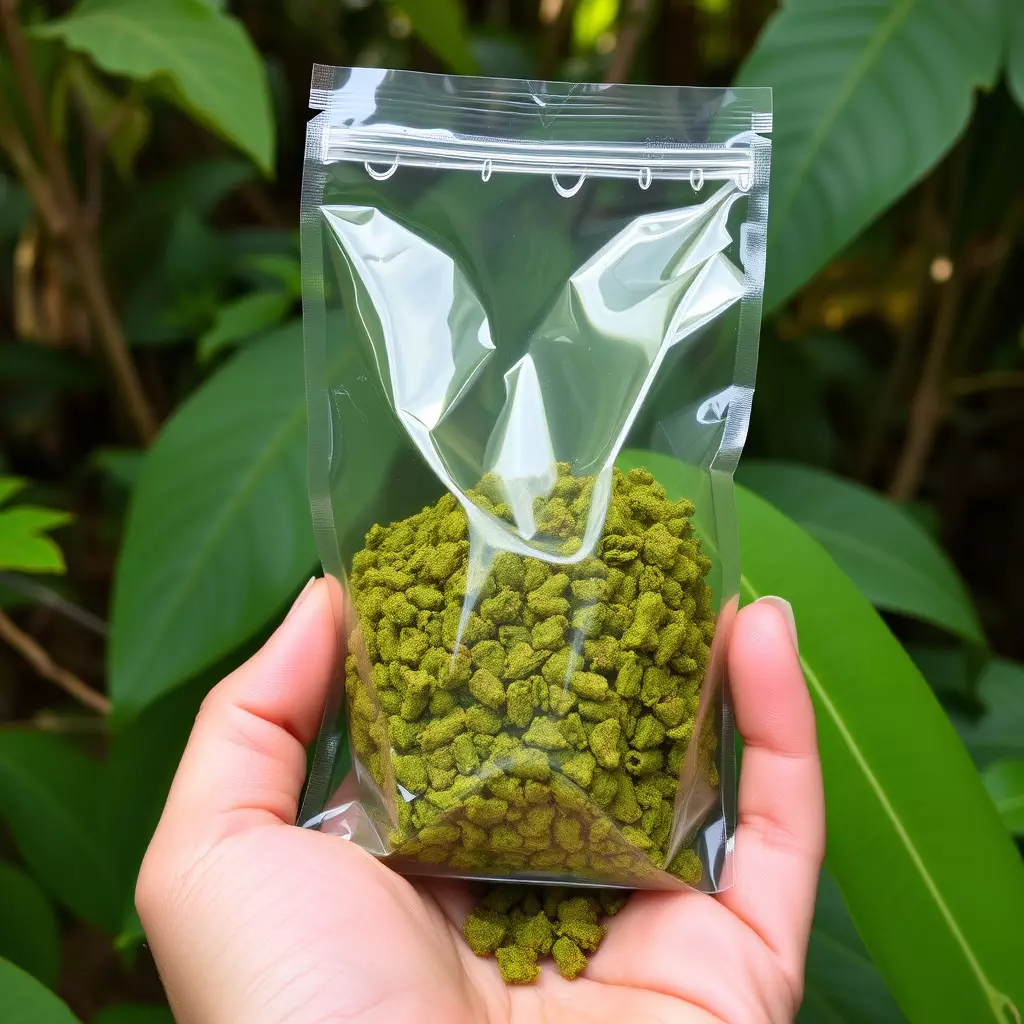Kratom, an herbal supplement from Southeast Asia, has been traditionally used for its stimulating and sedative effects and is gaining attention for its potential role in emotional regulation. The active alkaloids mitragynine and 7-hydroxymitragynine within kratom engage with opioid receptors in the brain to influence mood and emotions. Users report that kratom helps manage emotional reactions, contributing to more balanced emotional states, possibly through its effects on stress response and cortisol levels. While the scientific community continues to investigate kratom's effects, its use for emotional regulation should be approached with caution due to variability in individual responses, potential side effects, and varying legal statuses. It is advisable for individuals interested in using kratom for emotional well-being to consult healthcare professionals, start with a low dose, select strains carefully, and follow safety guidelines to minimize risks. Regular monitoring of emotional health and professional advice are recommended to ensure safe and informed use of kratom for emotional regulation.
Emotional regulation is a pivotal aspect of mental well-being, influencing our daily interactions and overall quality of life. Kratom, a botanical extract from the Mitragyna speciosa tree, emerges as a significant player in this realm. This article delves into how kratom can be employed to modulate emotional responses, thereby promoting a more balanced emotional state. We explore its effects on reactivity and stress response, offering insights into strain selection, dosage, and safety considerations for those seeking natural methods of emotional regulation with kratom. Join us as we uncover the potential benefits and responsible use of this intriguing substance in the context of emotional well-being.
- Unraveling the Role of Kratom in Emotional Regulation: A Natural Approach to Managing Emotions
- Kratom's Impact on Emotional Reactivity and Stress Response Modulation
- Harnessing Kratom for Balanced Emotions: Strain Selection, Dosage, and Safety Considerations
Unraveling the Role of Kratom in Emotional Regulation: A Natural Approach to Managing Emotions

Kratom, a botanical derivative from the leaves of Mitragyna speciosa, has garnered attention for its potential role in emotional regulation. Traditionally used in South East Asia for its stimulant and analgesic properties, recent studies suggest that kratom may also influence emotional states and reactivity. The alkaloids present in kratom, particularly mitragynine and 7-hydroxymitragynine, are believed to interact with the brain’s opioid receptors, which can modulate mood and pain perception. This interaction has been associated with a reduction in stress responses and an enhancement of positive affect. Users have reported that kratom helps them manage emotional responses more effectively, leading to a more balanced emotional state. It is postulated that by mitigating the intensity of emotional reactions, kratom could serve as a natural tool for emotional regulation. However, it is crucial to approach this topic with caution, as the scientific community continues to research and understand the full scope of kratom’s effects on emotions and overall well-being. The potential benefits of kratom in emotional regulation should be weighed against its regulatory status, which varies by country, and its possible side effects and interactions with other substances. Users considering kratom for emotional regulation should seek guidance from healthcare professionals to ensure safe and informed use.
Kratom's Impact on Emotional Reactivity and Stress Response Modulation

Kratom, a tropical evergreen tree native to Southeast Asia, has garnered attention for its potential role in emotional regulation. Its leaves contain alkaloids that can influence the brain’s opioid receptors, leading to various physiological and psychological effects. One of the most significant impacts of kratom is on emotional reactivity and stress response modulation. Users often report a mitigation of negative emotions, suggesting that kratom may help in managing stress-induced reactions. The alkaloid 7-hydroxymitragynine, in particular, is thought to play a key role in this process by interacting with brain regions responsible for mood regulation and pain sensitivity. This interaction can result in an attenuated emotional response to stressors, allowing individuals to maintain composure in challenging situations. The anxiolytic properties of kratom are also believed to contribute to its ability to soothe and regulate emotions, offering a natural alternative for those seeking to manage their emotional reactivity.
Furthermore, the modulatory effects of kratom on the stress response are evident in its ability to influence cortisol levels, a hormone closely linked with stress. By potentially lowering cortisol, kratom may aid in reducing the physiological symptoms associated with acute and chronic stress. This can lead to an overall improved sense of well-being and emotional stability. However, it is important to approach the use of kratom with caution, as individual responses vary greatly, and the long-term effects are still being studied. Users should consider consulting healthcare professionals before integrating kratom into their wellness regimen for emotional regulation, especially given the complex interplay between its active components and the brain’s chemistry.
Harnessing Kratom for Balanced Emotions: Strain Selection, Dosage, and Safety Considerations

Kratom, a plant native to Southeast Asia, has been traditionally used for its stimulating and sedative effects. In recent years, it has gained attention for its potential role in emotional regulation with kratom. The alkaloids present in kratom, primarily mitragynine and 7-hydroxymitragynine, are believed to interact with the brain’s opioid receptors, influencing mood and emotional responses. When considering harnessing kratom for balanced emotions, it is crucial to focus on strain selection, dosage, and safety considerations.
Different kratom strains have varying effects; some can uplift the spirit and alleviate anxiety, while others might provide a calming effect that can aid in reducing emotional reactivity. The Bali or Red Vein strains are often favored for their soothing properties, which may be beneficial for those seeking emotional balance. However, it is imperative to approach kratom use with caution. The optimal dosage can significantly differ based on individual tolerance and the specific strain’s potency. Users should start with a low dose to gauge effects and gradually increase as necessary, adhering to recommended guidelines to avoid adverse reactions. Safety considerations also involve being aware of potential interactions with other substances or medications and understanding the legal status of kratom in one’s jurisdiction. Regular monitoring of one’s emotional well-being and seeking professional advice when integrating kratom into one’s self-care routine are essential steps for safe and effective use for emotional regulation with kratom.
In conclusion, the potential of kratom to aid in emotional regulation and its influence on reducing emotional reactivity offers a promising natural alternative for individuals seeking to manage their emotions more effectively. By carefully selecting strains and dosages, and adhering to safety guidelines, individuals may experience a modulated stress response and a more balanced emotional state. It is imperative, however, to approach the use of kratom with caution, as individual responses can vary significantly. As research continues to evolve in this area, it remains crucial for users to be informed and discerning, ensuring that any decisions regarding kratom consumption align with personal health goals and professional medical advice. Emotional regulation with kratom holds significant potential, yet it is but one piece of the broader puzzle in holistic emotional well-being.






